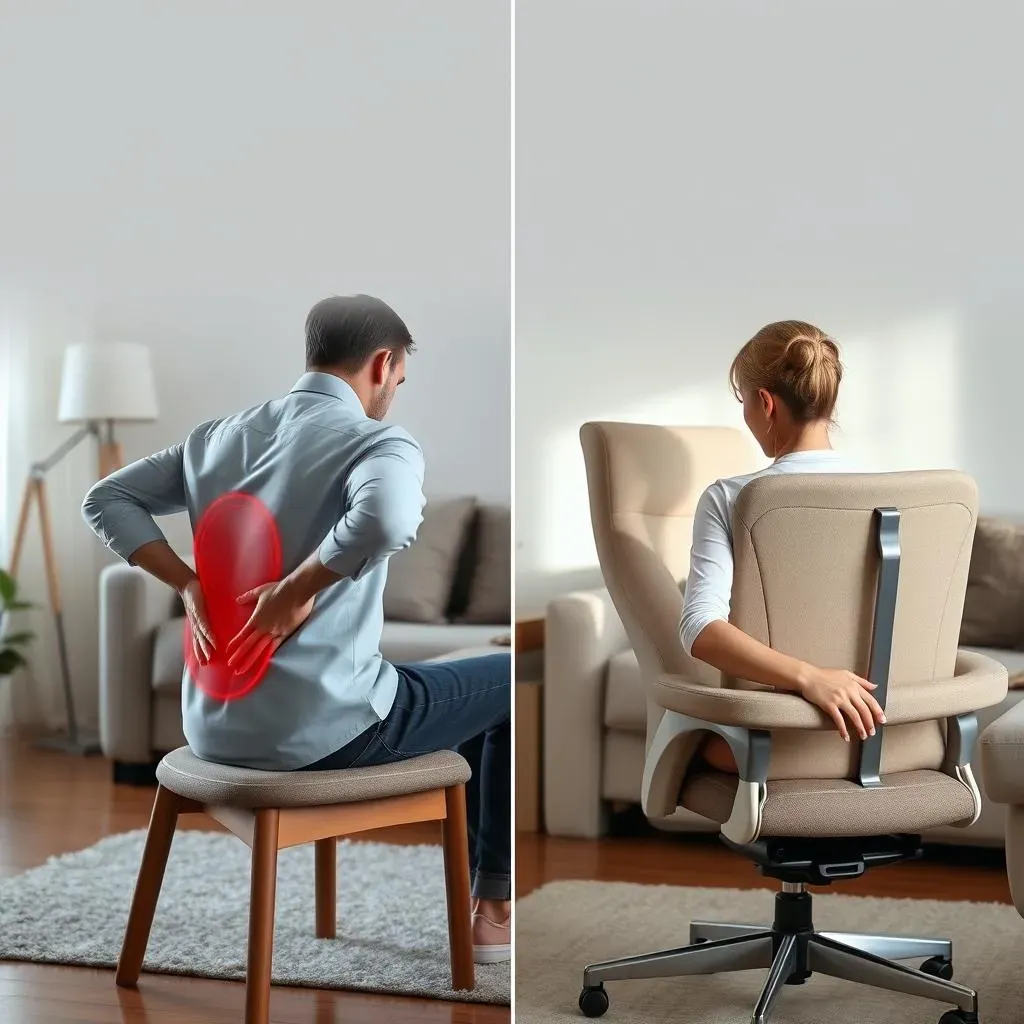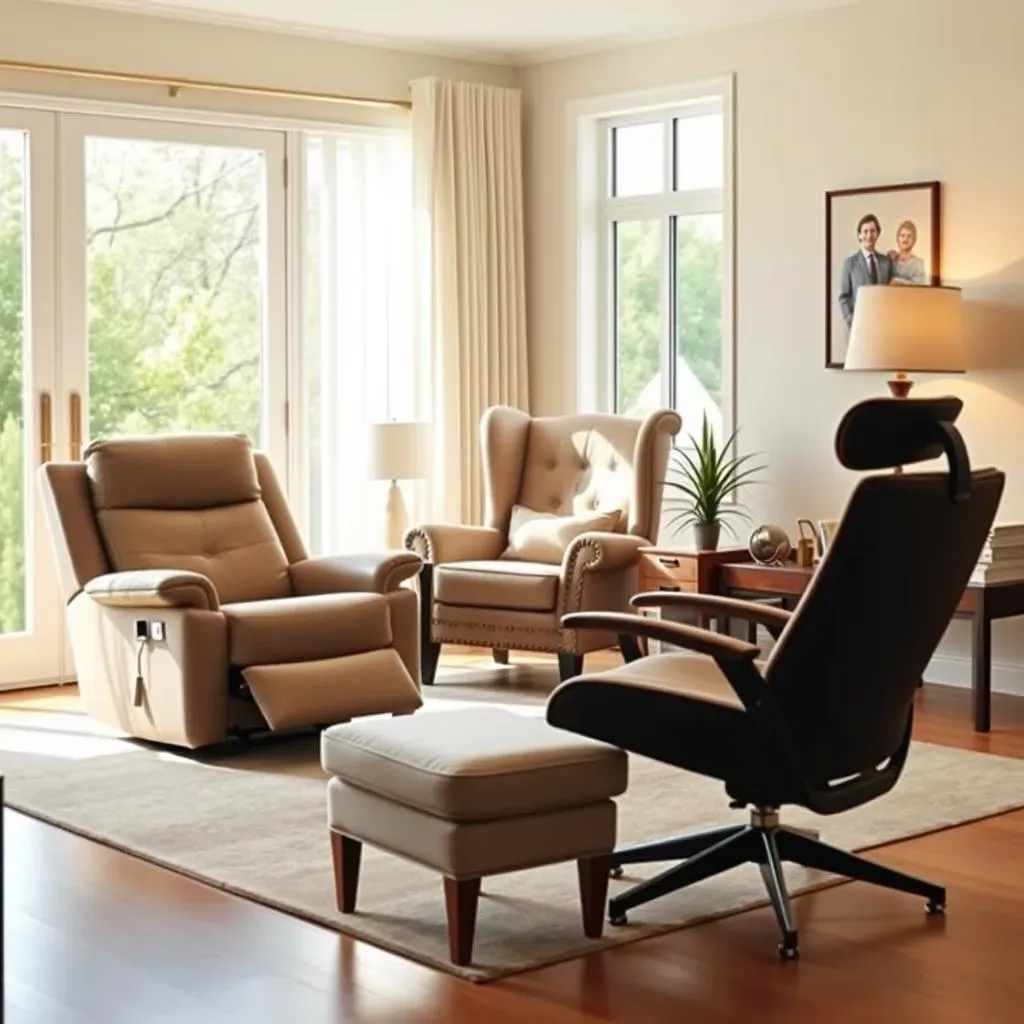Table of Contents
Ever feel like your living room chair is more of a torture device than a relaxation zone? If you're nodding, you're probably dealing with a common problem: a lack of proper support. That's where the magic of orthopedic chairs for living room with arms comes in. These aren't your grandma's recliners; these are designed with your body's needs in mind. We're talking about chairs that actually help ease back pain, improve posture, and make those Netflix binges way more comfortable. In this article, we'll walk through why these specialized chairs are a game-changer, what features you need to be on the lookout for, and I'll even give you some top recommendations to make finding the right fit easier. So, if you're ready to transform your living room into a haven of comfort, keep reading. By the end, you'll know exactly what to look for in the perfect orthopedic chair for your living room with arms.
Why You Need Orthopedic Chairs with Arms in Your Living Room
Why You Need Orthopedic Chairs with Arms in Your Living Room
The Pain Point: Regular Chairs Just Don't Cut It
Let's be real, most living room chairs are designed for looks, not for your body's well-being. They often lack proper lumbar support, causing you to slouch, which, let’s face it, is terrible for your back. I remember spending hours on my old couch, and by the end of the night, my back felt like a pretzel. The arms are either too low or too far apart. This makes it difficult to find a comfortable position. This leads to aches, pains, and general discomfort, which is not how anyone wants to end their day.
Think about it, how many times have you shifted around trying to get comfortable? Or maybe you've experienced that awful stiffness after getting up from your favorite spot? That's your body telling you that it needs something better. That's where orthopedic chairs come in, offering a solution that actually prioritizes your comfort and health.
Problem | Solution |
|---|---|
Lack of Lumbar Support | Ergonomic Design |
Poor Arm Positioning | Properly Placed Arms |
General Discomfort | Targeted Support |
The Orthopedic Advantage: Comfort and Support
Orthopedic chairs with arms are specifically engineered to address these issues. They provide the proper support for your spine, encouraging good posture and reducing strain. The armrests are placed to allow your shoulders to relax, reducing tension in your neck and upper back. It's not just about comfort, it's about investing in your long-term health. I've noticed a huge difference since switching to an orthopedic chair. It's like having a mini spa treatment every time I sit down. It's the small changes that can make a big difference.
These chairs aren't just for people with existing back problems either. They're beneficial for anyone who spends a lot of time sitting, whether you're working from home, relaxing with a book, or watching TV. Think of them as a preventative measure against future aches and pains. Trust me, your body will thank you.
"The best way to predict the future is to create it." - Peter Drucker
Features to Look for in Orthopedic Living Room Chairs with Arms
Features to Look for in Orthopedic Living Room Chairs with Arms
Key Features: What Makes a Chair Truly Orthopedic?
so you're convinced you need an orthopedic chair with arms, but what should you actually be looking for? It's not enough to just slap the "orthopedic" label on something, you know? Let's break down the crucial features. First up, we have lumbar support, which is non-negotiable. A good chair will have a built-in curve or adjustable support that fits snugly into the small of your back. This helps maintain your spine's natural alignment and prevents that awful slouch. Then, think about the armrests, they should be at a height that allows your shoulders to relax, without you hunching over or reaching up. Adjustable armrests are a bonus, so you can customize them to your body. And, of course, the material matters. Breathable fabrics are best to keep you comfy, especially if you're planning on spending a good chunk of time in your new chair.
Next, we need to consider the seat itself. Is it firm enough to provide support but not so hard that it feels like sitting on a rock? Look for a seat with good padding and a supportive base. Also, the height of the chair is important. Your feet should be able to rest flat on the floor while your knees are at a 90-degree angle. It might sound like a lot of details, but each one plays a role in making the chair truly orthopedic. It's like finding the perfect pair of shoes, it just needs to feel right for *you*.
Feature | Why It Matters |
|---|---|
Lumbar Support | Maintains spinal alignment, reduces back strain. |
Adjustable Armrests | Relaxes shoulders, prevents neck tension. |
Breathable Fabric | Keeps you comfortable, avoids overheating. |
Seat Firmness | Provides support without discomfort. |
Chair Height | Allows for proper posture, reduces leg strain. |
Top Picks: Best Orthopedic Chairs with Arms for Your Living Room
Top Picks: Best Orthopedic Chairs with Arms for Your Living Room
The "Goldilocks" Approach: Finding What's Just Right
Alright, so now we get to the fun part, picking the actual chair. It's not about finding the most expensive one or the one with the most bells and whistles. It's about finding the chair that fits your body and your lifestyle. Think of it like Goldilocks and the three bears, you need to find the one that's "just right." Now, I can't tell you exactly what chair to buy, because everyone is different, but I can give you some ideas based on my research and what I've seen people rave about. We're aiming for comfort, support, and something that doesn't look like it belongs in a doctor's office.
First off, let's talk about recliners. These are great if you like to kick back and relax, but not all recliners are created equal. Look for ones with good lumbar support, adjustable headrests, and armrests that don't leave you awkwardly reaching. Then, we have the classic wingback chairs, which can offer excellent back support if they're designed right. The key is to pay attention to the details. Is the chair sturdy? Are the cushions firm but comfortable? Does it fit your room and your decor? It's a bit of a balancing act, but when you find the right one, you'll know it.
Real-World Recommendations: What People Love
So, what are some specific chairs that people are actually loving? I've seen a lot of positive feedback about brands that focus on ergonomic design, like Herman Miller and Steelcase, though those are more office-oriented, they do have models that can fit in a living room. For more traditional living room looks, brands like La-Z-Boy and Ashley Furniture have some great options that are both stylish and supportive. The key is to read reviews and see what other people with similar needs are saying. Sometimes, it's the smaller brands that surprise you with their comfort and quality. Don't be afraid to explore a bit. I'd also recommend trying out chairs in person if you can. Sitting in it for 5 minutes in a store is different than using it for hours at home, but it's better than nothing.
Remember to think about your specific needs too. Do you need extra support for your lower back? Do you prefer a high back or a low back? Do you want a chair that reclines or one that stays put? These are all important questions to consider when you are on the hunt for a new chair. It's like picking a new phone, you need to do a little research before you commit. And, no matter what chair you decide on, make sure it comes with a good return policy. You might need to live with it for a while before you know if it's the right fit.
Chair Type | Pros | Cons |
|---|---|---|
Recliner | Great for relaxation, adjustable support. | Can be bulky, not always the most stylish. |
Wingback Chair | Good back support, classic look. | May not have adjustable features. |
Ergonomic Chair | Excellent support, highly adjustable. | May be more expensive, not always traditional design. |
Wrapping Up: Your Path to Living Room Comfort
Finding the right orthopedic chair for your living room with arms doesn't have to feel like a chore. Armed with the knowledge of why these chairs matter, the key features to prioritize, and some top picks to consider, you're well on your way to transforming your living room into a supportive and relaxing space. Remember, investing in a good chair is an investment in your well-being. Don't settle for discomfort when you can have a stylish and supportive seat that truly understands your body. It's time to ditch the aches and pains and embrace the comfort you deserve. Happy lounging!